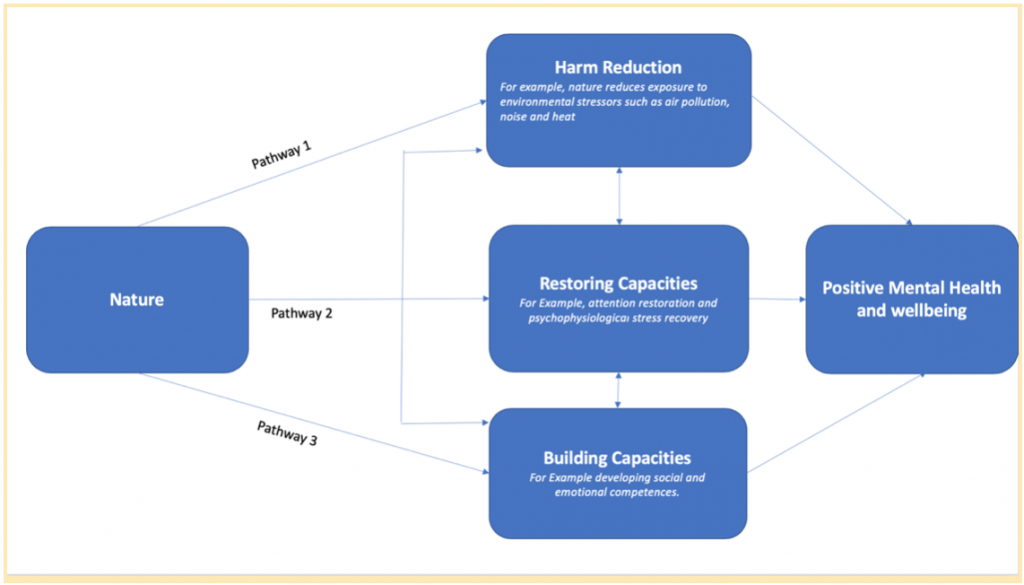By Thomas Albers
The benefits of nature on youth’s positive mental health and wellbeing have received an increased attention in the youth setting in the recent years. Connectedness with nature and nature’s wellbeing are also of importance to the future of Europe as they are part of the European Youth Goals (Goal 10).
For nature to be beneficial to the mental health and wellbeing of young people, the quality and type of interaction are important. Just being in contact with nature already has positive effects on the levels of wellbeing, but nature-connectedness on the other hand, in which there a psychological, emotional and spiritual connection with nature, offers even more possibilities to promote mental health and wellbeing[1][2]. Spending a weekly amount of at least 120 minutes in a nature-rich environment is considered a healthy “dose” for the wellbeing of young people[3].
In general, it is assumed that the effect of nature on mental health and wellbeing follows at least three pathways (see figure 1). Multiple pathways are likely to be engaged simultaneously and the benefits are intertwined.Being in nature has direct effects on the wellbeing levels through a harm reduction pathway, which means that the harmful effects of exposure to environmental stressors such as air pollution, non-natural noise and heat are being reduced (pathway 1). Being in nature also offers the possibility to restore affective, cognitive and physiological capacities (pathway 2), after for example being very stressed, emotionally or cognitively exhausted[4]. The third pathway refers to the possibility that nature not only promotes the restoration capacity, but can move young people from a standard or good state to an even better or optimal state. Examples of this capacity building effect of being connected with nature are increased levels of personal growth, self-esteem, self-regulation, social competency and an increased sense of autonomy[2][5].
Recognising and integrating the beneficial capacities of nature in youth interventions that promote youth mental health can improve their quality and effectiveness. Given that today more and more young people live in urban areas, where the presence of nature is less available than in rural areas, spending time in nature is becoming a unique experience.

References:
[1] Markevych, I., Schoierer, J., Hartig, T. et al. (2017). Exploring pathways linking greenspace to health: Theoretical and methodological guidance. Environmental Research, 158, 301-317.
[2] Capaldi, C. A., et al. (2015). Flourishing in nature: A review of the benefits of connecting with nature and its application as a wellbeing intervention. International Journal of Wellbeing, 5(4), 1-16. doi:10.5502/ijw.v5i4.1
[3] White, M.P., Alcock, I., Grellier, J., et al. (2019). Spending at least 120 minutes a week in nature is associated with good health and wellbeing. Scientific Reports 9, 7730.
[4] Kaplan, S. (1995). The restorative benefits of nature: towards an integrative
framework. J. Environ. Psychol. 15, 169–182. doi: 10.1016/0272-4944(95)90001-2
[5] Norton, C. L., & Watt, T. T. (2014). Exploring the impact of a wilderness-based positive youth development program for urban youth. Journal of Experiential Education, 37, 335-350. http://dx.doi.org/10.1177/1053825913503113